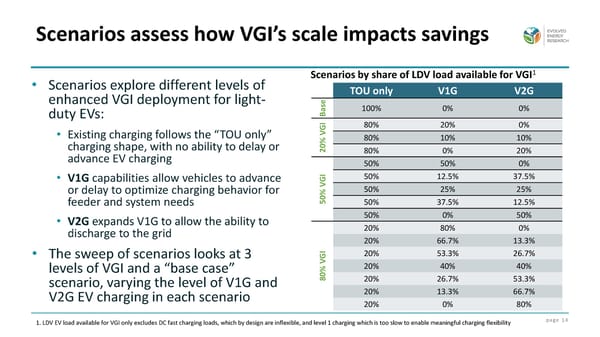page 14 • Scenarios explore different levels of enhanced VGI deployment for light- duty EVs: • Existing charging follows the “TOU only” charging shape, with no ability to delay or advance EV charging • V1G capabilities allow vehicles to advance or delay to optimize charging behavior for feeder and system needs • V2G expands V1G to allow the ability to discharge to the grid • The sweep of scenarios looks at 3 levels of VGI and a “base case” scenario, varying the level of V1G and V2G EV charging in each scenario Scenarios assess how VGI’s scale impacts savings TOU only V1G V2G Base 100% 0% 0% 20% VGI 80% 20% 0% 80% 10% 10% 80% 0% 20% 50% VGI 50% 50% 0% 50% 12.5% 37.5% 50% 25% 25% 50% 37.5% 12.5% 50% 0% 50% 80% VGI 20% 80% 0% 20% 66.7% 13.3% 20% 53.3% 26.7% 20% 40% 40% 20% 26.7% 53.3% 20% 13.3% 66.7% 20% 0% 80% 1. LDV EV load available for VGI only excludes DC fast charging loads, which by design are inflexible, and level 1 charging which is too slow to enable meaningful charging flexibility Scenarios by share of LDV load available for VGI1
 Exploring the Value of Vehicle to Grid (V2G) for California Page 13 Page 15
Exploring the Value of Vehicle to Grid (V2G) for California Page 13 Page 15